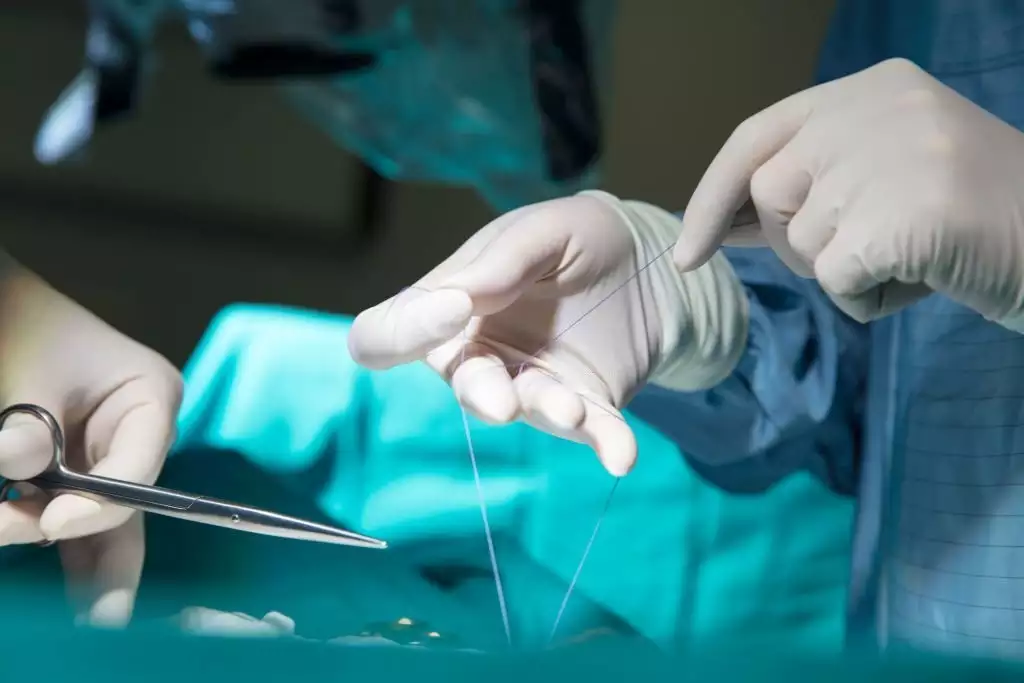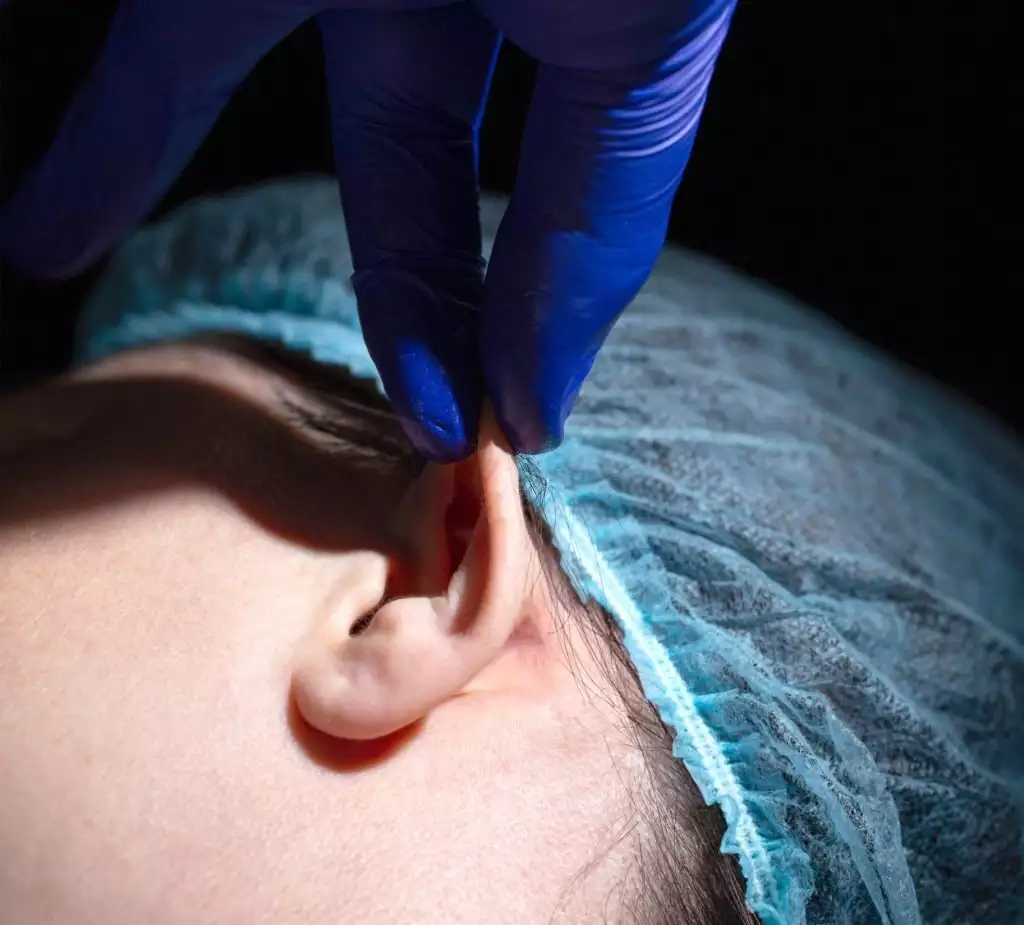
What to know about ear tube surgery (otoplasty)? otoplasty cost?
The ear is an important sense organ that enables us to hear, it also provides symmetry on our face and causes a bad image if it is out of standard sizes. Ear sizes larger than normal damage people's confidence and negatively affect their social lives. Ear lobe size and prominent ear, which is mostly a congenital condition, caused very troublesome processes for people until aesthetic surgeries developed.
What is Ear Aesthetics?
The medical name of ear surgery, also known as prominent ear surgery, is Otoplasty . The prominent and larger-than-normal ears may be due to various reasons. The prominent ear, which does not pose a problem in terms of hearing, has become a problem mostly due to the cynical attitudes of the society. Especially in primary school children, it causes traumas due to the attitudes and nicknames of their friends. Therefore, the answer to the question of how old is ear aesthetics is that it is recommended by doctors to do it at an early age, especially in preschool, that is, in this early period when the cartilage tissue is softer. 6 years of age is the ideal period for this surgery.
Today, with the developing medicine and aesthetic surgery technology, ear surgery is performed in an extremely simple way and it heals in a very short time. Ear surgery, which is the process of reducing the large earlobes and bringing the prominent ears to normal sizes, takes an average of 1 hour and does not carry any risk for the patients. On the contrary, after ear aesthetics, people get the look they dream of, gain their self-confidence, so they start a new and happier life.
What is the Anatomical Problem in the Prominent Ear?
Prominent ears are normally not very large, but due to the developmental disorder, they appear larger because they are more prominent towards the front. 90% of ear development ends at the age of 6 and reaches adult ear sizes. Because of this, prominent ears appear larger than in children. In prominent ears, the ratio of the ear to the head has a wider angle than normal, and the ear should be adjacent to the head, but it extends outward, is clearly in shape. And since the folds above the ear are not formed, the ear has a straight appearance.

There may be various deformities in the ears other than the prominent ear. Some of these are as follows:
- The angle between the head and the ear is wide.
- There are no folds that add aesthetics to the ear.
- In this case, the entire ear may be prominent.
- The upper 1/3 or 2/3 of the ear may be more prominent.
- The ear is not prominent, but large.
- The ear is normal, but the earlobe is large.
While these problems sometimes occur in one ear, sometimes they are present in both. Sometimes it is present in both ears, but its degrees can vary.
How Is Ear Aesthetics Performed?
Before the operation, the patient's face measurements should be calculated correctly and the angles should be calculated in accordance with the size of the face. In some cases, although the ears are in the right size, the cartilage tissue being too large causes a prominent appearance. In such a case, the surgeon will only choose to reduce the outer ear.
- Before the operation, the patient should inform the doctor about the drugs he used and his medical history, stop smoking at least 2 weeks before the procedure, and not smoke until the treatment process is completed.
Ear aesthetic surgeries are mostly performed because people do not feel happy. Local anesthesia is applied in the surgery, but general anesthesia is applied because some patients, especially children, do not prefer local anesthesia. If there is a problem with the angle, it is corrected first, otherwise the outer ear is reduced directly.
The surgery is performed with a small incision made behind the ear, and there is no trace of the surgery afterwards. The cartilage is reduced to normal sizes and then sutured and the operation is completed. Since the sutures used in this operation are self-dissolving, there is no need to take stitches afterwards. Thus, an extremely aesthetic and natural appearance is obtained.
What are the Problems that May Occur After Ear Aesthetics?
- The accumulation of blood (hematoma) observed after each operation is a normal condition that can also be seen after ear surgery. The accumulated blood is emptied and corrected with an injector.
- Infection in the cartilage tissue is an expected situation, but the risk is kept to a minimum with the superior precautions taken. However, if this situation develops, cartilage transfer should be performed with a second operation.
- Almost every patient has an asymmetry problem, and in some cases, the operation is only to provide symmetry between the ears. In prominent ear surgery, it is very difficult to see the ears at the same time, so the symmetry between the ears cannot be fully achieved, but after the prominent ear is corrected, small roughnesses are not noticed.
- Patients often want the ears to be very close to the head, but this causes an extremely bad image. Correction of the ears in the most accurate sizes and angles will give the most natural appearance.
- In some cases, after a while (4-5 months) after the operation, the stitches may want to come out in the form of acne. In this case, consult a doctor and have the stitches removed. In this case, there is nothing to be afraid of; Since the ears are in their final shape, there will be no harm in removing the stitches.
Types of Ear Aesthetics
Ear aesthetics is performed with two main techniques. One of them is the traditional method of incision and stitching, and the second is the method of ear aesthetics with threads. Which of these methods will be used is determined by the patient's demand, medical history and the diseases the patient has. Thread ear aesthetic method is preferred by people who are afraid of an incision and a serious operation. In addition, the rope-applied method is also very suitable for young children.
How is Prominent Ear Surgery With Thread Performed?
Prominent ear surgery with thread is a fairly new technique. Although it is called surgery, it is actually a procedure performed without any incisions or stitches. Medical threads are placed with the help of a needle from the cartilage tissue at the top of the ear, and the necessary is given and the process is terminated. After the operation, which takes 15-20 minutes on average, the patient can return to his work and social life immediately.
After Prominent Ear Aesthetics with Thread
We can learn how positive this technique is and that it gives good results with the comments of those who have had prominent ear surgery.
Among Its Advantages:
- It is a fast and practical operation that provides great convenience to the patient.
- Occurs in 15-20 minutes
- It heals much faster than conventional surgery and the patient can return to life immediately.
- No surgical risks
- No incision, no bleeding
- After the operation, the patient can immediately examine his ear.
- There are no scars and stitches, but in classical surgery, there is no scar because the incision is made behind the ear and invisible stitches are placed.
Is Prominent Ear Surgery Permanent?
It is very important to pay attention to and apply what the doctor says after the procedure. The patient should protect the ear from impacts and avoid sudden movements during the treatment period. In case of the slightest problem, a specialist should be consulted.
It is recommended to wear an ear band before going to bed in the first 2 weeks.
After Ear Aesthetics
Mild pain after surgery is expected because the treated area consists of a cartilage tissue, and it is extremely normal to experience pain. However, painkillers to be used under the control of a doctor after the operation will alleviate the situation. If local anesthesia was applied in the surgery, the patient can be discharged on the same day and return to his normal life. However, if general anesthesia was applied, he or she should stay under observation in the hospital for one day, and if the patient is a child, he should definitely stay in the hospital. In the first 1 or 2 weeks, you should come to the hospital for dressing and control. Thus, edema and swelling in the ear are controlled and the healing process is accelerated.
Since the incision made in classical surgery remains behind the ear, there will be no scar. The first bathing permit is usually determined after the first inspection. Care should be taken against impacts and sudden movements, supine position should be preferred while sleeping.
Is Prominent Ear Surgery Permanent?
Scooping after classical ear surgery is an unexpected and uncommon situation. If the patient complies with the treatment requirements, no problems will arise. In the threaded ear operation, the patient should meticulously fulfill the treatment requirements so that there is no opening. Ear surgeries are one of the simplest aesthetic operations, they certainly do not carry risks that patients should worry about.
Aesthetic Ear Band
In the classical method, a hair band is used for about 2 weeks, but in the rope method, it is recommended to be used only at night before going to sleep.

Ear Lobe Aesthetics
Earlobe reduction; It is the process of bringing the elongated, enlarged and swollen tissue to its normal size for various reasons. The reasons for the growth of earlobes include hereditary factors, aging process, tendency to grow, heavy earrings and piercings used, etc. countable. The fact that the earlobes reach a size that is far outside the normal, causes an aesthetically bad appearance and disturbs people psychologically.
Today, medical technology and aesthetic applications have made great progress and many methods have been developed that can be applied for earlobe enlargement. Earlobe correction is a second aesthetic operation performed after prominent ear surgery, which is the main problem. If you have any of these problems, you can be treated with very simple methods and you can get the most suitable ear structure for your face.
Ear Lobe Surgery
This procedure is an application that takes an average of 1 hour in a clinical setting with local anesthesia, that is, by numbing only the ear area. After the ear structure suitable for the size of the face is determined, the area is anesthetized and the excess tissue is cut off. After the sewing process, the operation is completed. The patient does not feel anything during the operation and is himself. Minor pain felt after the operation is minimal and can be easily overcome with painkillers to be taken.
Will There Be A Scar After the Operation?
After the earlobe operation, there will be a small incision scar, but this scar will reach an indistinct appearance within a period of 5 or 6 months and this scar will completely disappear at the end of a year. Of course, although it varies according to the skin color of each patient, this scar often becomes vague over time.
Other Ear Disorders
Constic Ear: Various ear deformations in which the spiral edge on the upper part of the ear is folded (also called drooping ear), wrinkled or tight.
Cryptotia: It is called partial embedding of a part of the ear cartilage under the scalp.
Microtia: means underdeveloped outer ear . In this case, insufficient development can also lead to hearing loss. Although it has treatment, it is extremely complicated. Prosthetic ear is made with cartilage tissue taken from the rib and the appearance is improved.
Anotia: Case where the ear is completely absent.
Stahl Ear: The formation of an extra cartilage structure in the scapha part of the ear and the formation of a pointed shape is called.
Accessory Tragus: In other words, it is the remains of appendages or branch clefts in the ear. Ear appendages are made up of cartilage and skin.
Ear Lobe Deformities: These deformations are mostly cleft earlobe, double earlobe, skin fold , etc. appears in various forms.
Cauliflower Ear: An abnormal cartilage tissue forms on the normal ear cartilage, which causes an unpleasant appearance and makes the healthy ear lazy.
Ear Keloids: These cases, which usually develop due to ear piercing procedures, are also called after minor trauma. In this case, excessive scar tissue forms.
Ear Hemangiomas: A benign tumor seen in infancy, it can occur in various parts of the body such as the outer ear and salivary gland.
Reasons
The causes of ear deformations are multifaceted, the majority of which are congenital, hereditary, and may be of congenital origin. Some children's ear problems; Goldenhar syndrome, Charge syndrome, is caused by genetic disorders that can affect multiple metabolic and body systems. Ear problems can be inherited or caused by genetic mutations.
Ear Aesthetics Prices
It is not correct to give information about applications that directly concern health in the virtual environment. It is most appropriate for people to meet with clinics and specialist doctors one-on-one to get information about treatment options, suitability and the technology used. Because these surgeries are not suitable for everyone, they are determined after a comprehensive examination under the control of a doctor.
Frequently asked Questions
- What is prominent ear?
- What is prominent ear aesthetics?
- How is prominent ear aesthetics performed?
- Will there be any scars after prominent ear aesthetics?
- At what age is prominent ear aesthetics performed at the earliest?
- Will the ears return to their original state after prominent ear aesthetics?
- Can adults have prominent ear aesthetics?
- When can I return to work and school after prominent ear surgery?
- What are the advantages of prominent ear surgery?